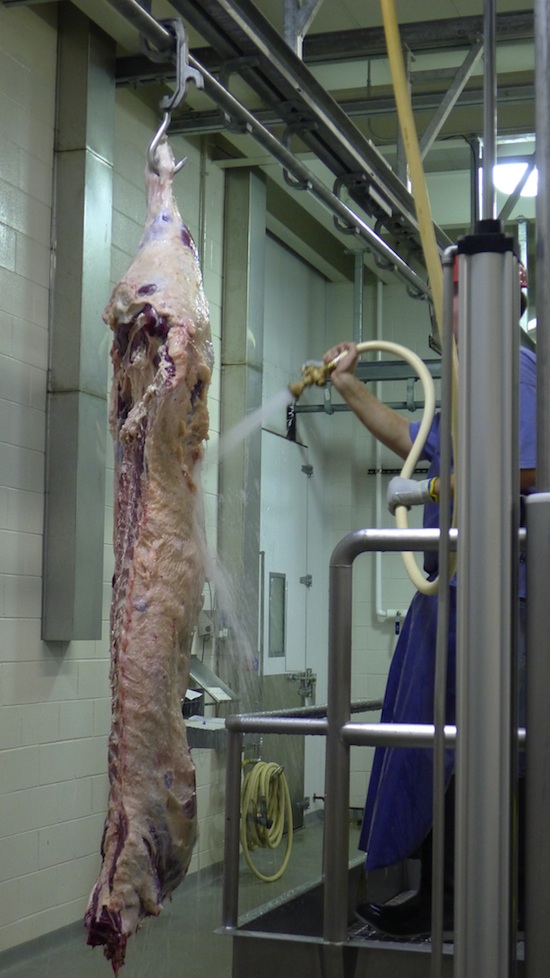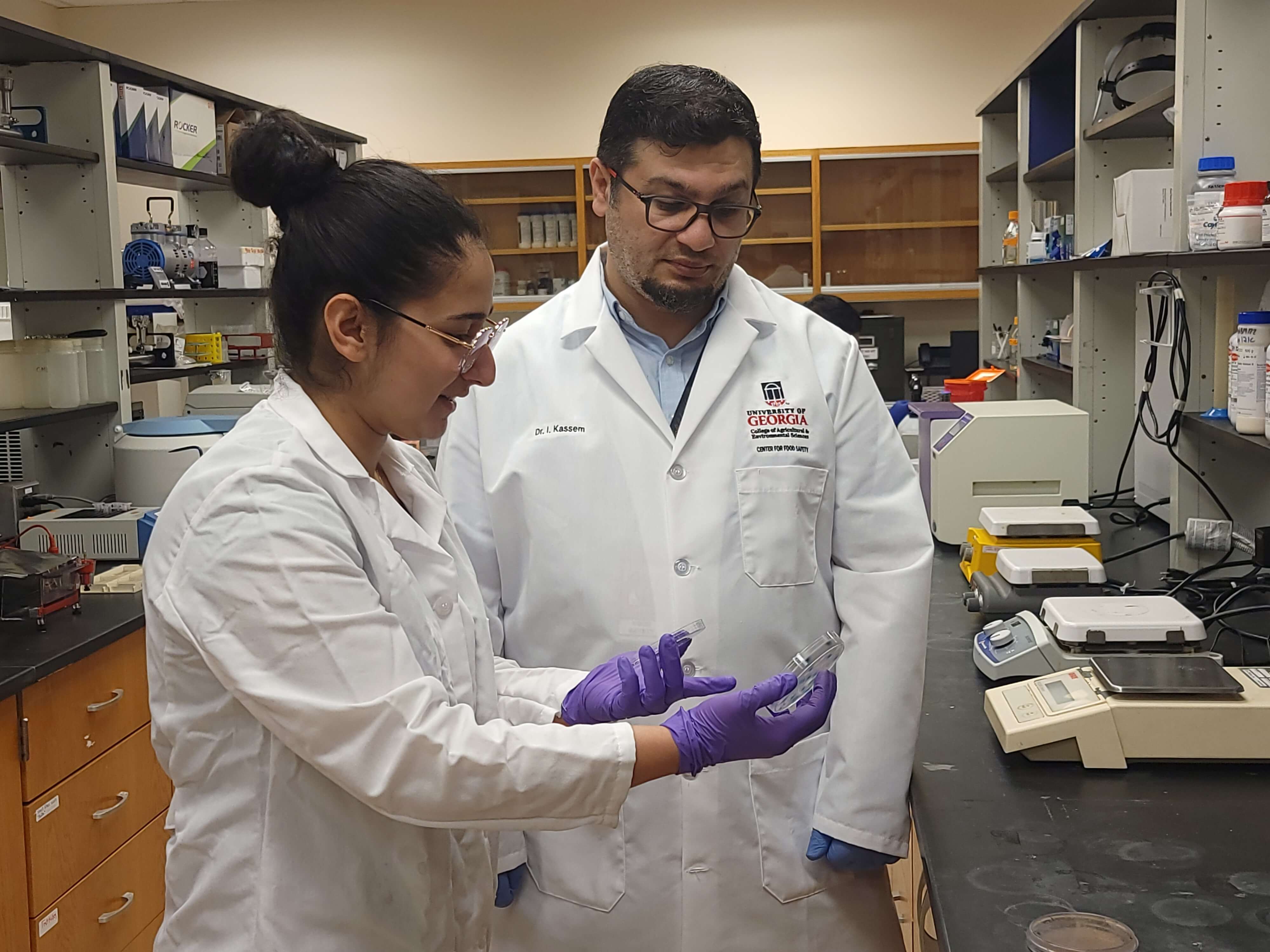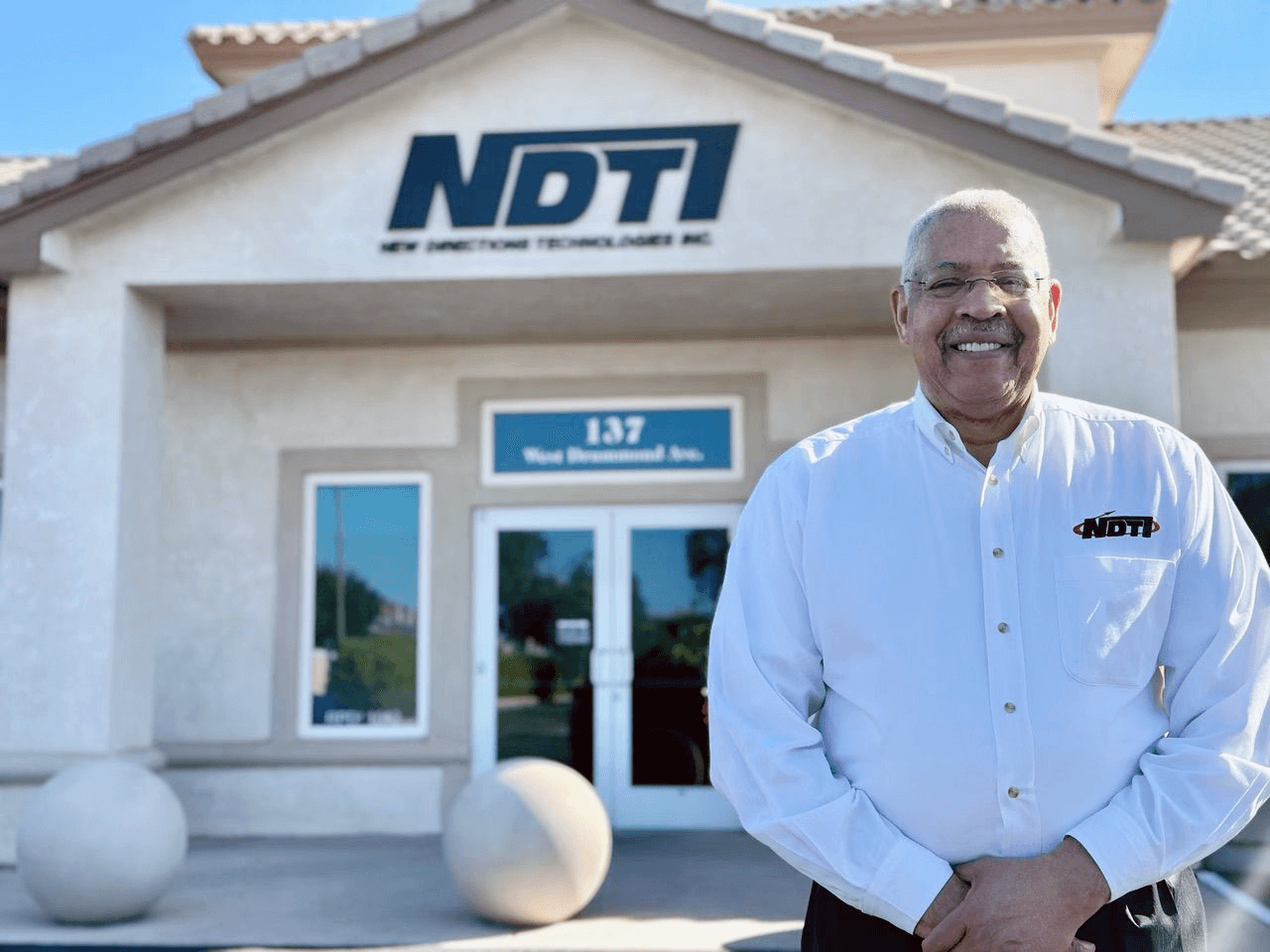University of Georgia researchers have used electrolyzed oxidizing water to sanitize poultry, kill funguses on nursery-grown plants and remove pathogens from produce. Now they’re using it to reduce shiga toxin-producing E. coli (STEC) on beef.
For more than 10 years, UGA food scientist Yen-Con Hung has researched the use of electrolyzed oxidizing, or EO, water to make food safer and surfaces cleaner. EO water is created when a saltwater solution goes through an electrolysis process that separates the water’s positive and negative ions. This makes two forms of water: one very acidic and one very alkaline. The acidic EO water is used to sanitize surfaces and kill bacteria, and the alkaline EO water is used as a detergent.
Hung’s latest project uses EO water to inactivate levels of seven strains of STEC pathogens in beef processing. This year alone more than 55,000 pounds of beef products have been recalled due to the presence of STEC, he said.
To inactivate the pathogens, Hung and his colleagues applied both streams of EO water to beef hides during processing.
“If we can prevent the STEC from getting on the carcass, we can prevent it from getting in the ground beef,” said Hung, a professor in the UGA College of Agricultural and Environmental Sciences. “This uses both EO water forms; alkaline to clean the hide and acidic to kill the STEC on the surface.”
This project is part of a five-year, $4.9 million grant from the U.S. Department of Agriculture to study ways to kill foodborne pathogens on beef before it arrives on supermarket shelves and in restaurant kitchens. The overall project focuses on six different processing technologies for the entire beef-value chain, from meat processing facilities to super markets. The goal is to determine which technology or combination of technologies is effective and feasible to adopt across the industry, he said.
The food industry currently uses a chlorine solution to kill bacteria. Acidic EO water can be up to 10 times more effective at killing harmful bacteria than traditional methods, Hung said. Hung’s EO water research results were published this year in Food Control and LWT Food Science and Technology Journal.
In 2009 the USDA Economic Research Service estimated the annual economic cost of illness caused by STEC O157 was $478 million. This estimate includes medical costs due to illness, kidney dialysis and transplant costs, the value of time lost from work due to nonfatal illness and the value of premature death, Hung said.
In a separate study, Hung is working with a major restaurant chain to test the use of EO water in individual restaurants. “We are testing the units and the water under a simulated food service condition to sanitize the fruits and vegetables the restaurant serves,” he said.
UGA food scientists and University of Tennessee researchers will soon begin a study on the use of EO as a possible bacteria-killing mouthwash. “We want to see if it can deactivate oral bacteria, and if it’s effective at cleaning the water lines at dental chairs,” Hung said.
EO water is far from new. It’s been used for more than 200 years to produce chlorine. For the past 20 years, small-scale EO water producing units have been available for commercial and home use.
“In the U.S. at least 10 carbonated-beverage bottling plants are using EO water to clean inside mixing tanks, pipes and tubing, so they don’t have to take equipment apart to clean it,” Hung said.
Some grocery store chains use EO water to keep fresh produce clean. “They use EO water to mist the produce and sanitize the areas used to cut fresh fruits and vegetables,” he said.
Currently, Hung holds a patent on a method that makes EO water more stable. In addition, he is working on alkaline EO water as a drinking water for health promotion. Alkaline EO water typically loses its antioxidant capacity within an hour. Hung has developed a process that allows alkaline EO water to be bottled with its high antioxidant benefits remaining stable for more than six months.
“Alkaline EO water isn’t new,” Hung said. “Consumers in Japan, Asia, Europe and the U.S. have been drinking it for years. The ability to make it shelf stable is new.”
The cost of an in-home EO unit is becoming more affordable. Hung has seen home units for sale online for less than $300.
There is no taste difference between alkaline EO water and traditional bottled waters, he said. “That’s the beauty. It’s just like drinking water you are used to, but you get many additional benefits,” Hung said.
For more on the UGA beef safety project, see the website www.caes.uga.edu/research/beefsafety.








